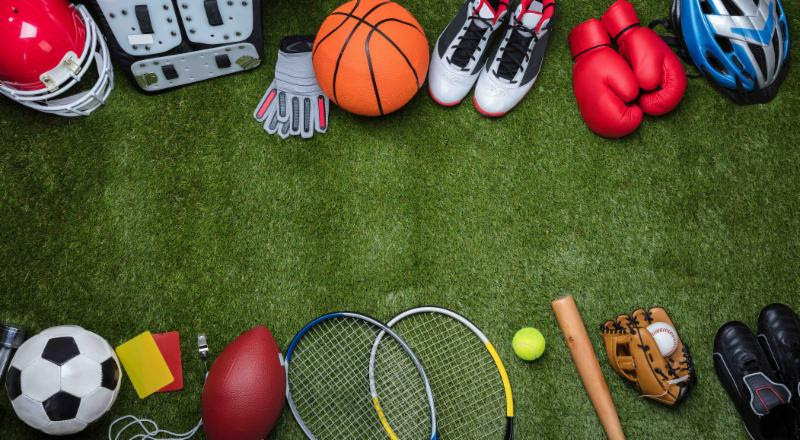Promoting the Benefits of Multi-Sport Participation in High Schools
By Cameron Baker on May 20, 2024

In Malcom Gladwell’s book, Outliers, he proposes the idea that it takes 10,000 hours of concentrated, intentional practice in order to have a world-class skill, whether that skill be in athletics, the arts or anything else. As the book gained popularity, so did the idea of the 10,000-hour principle. In the world of high school sports, in many cases it has led to coaches and parents focusing on sport specialization.
In the 2022 NFL Draft, however, 233 of the 262 players drafted participated in multiple sports in high school, while only 29 solely played football. Nearly 45 percent of the draftees played three or more sports in high school.
While multi-sport participation comes down to the athlete’s decision, schools can still find ways to promote and cultivate an athletics program that has high levels of cross-sport participation.
Such was the topic of discussion at a workshop on “Increasing Multi-Sport Participation” at the 2023 NFHS Summer Meeting in Seattle, Washington. Leading the workshop were Renee Regoli, CMAA, athletic director of Dobson High School, Gilbert, Arizona, and BJ Kuntz, CAA, director of athletics for the Renton (Washington) School District.
The speakers noted that the first step is to understand why students participate in sports, and stay in sports. One aspect of participation is rooted in health.
For many students, the speakers noted, participation in sports is a way to stay in shape for either their “main sport” or to achieve their own personal fitness goals. Another aspect of participation is the school impact. When students are competing for a school’s athletic team, there are often punishments if a player is unable to meet GPA or attendance requirements. Student-athletes are also able to receive collegiate athletic scholarships for their performances in high school.
“A season starts, it ends, and you get to do a new one. So that resilience that you develop mentally is important, and then I would say participation in sports provides stress relief and friendships,” Kuntz said. “So, I think spending time with new classmates, new teammates, exercising in a new way, all of that contributes to the overall health and wellness of student-athletes.”
But the value of high school athletics goes much farther than pursuing collegiate scholarships, the speakers noted. Education-based athletics within high schools is a place where students can be developed and taught valuable life lessons. Multi-sport participation can enhance these benefits, while also adding more. If athletes participate in multiple sports, they generally have fewer injuries due to muscle groups getting rest. There’s also a reduced chance for burnout since athletes are not focusing on one sport, and they can even learn how to take on new roles within an athletic program.
“They’re also learning how to be a different type of teammate,” Regoli said. “You could have a basketball player who is probably going to go to college to play basketball, but also is very interested in playing volleyball, but they’re not that talented. Now they’re coming off the bench to be good teammates. So, they’re learning how to be a good teammate that’s going to cheer and support. So, you get those different experiences, and you get a deeper understanding of what it’s like to be the bench player, the starter, star athlete, the one that has to work harder than anybody just to see the field.”
The speakers noted that to be able to give kids these experiences and benefits, schools have to create a culture that promotes cross-sport participation. One way that athletic departments can do this is to set up school-wide “clubs” that recognize athletes for being in multiple sports. In Kuntz’s school district, she has set up gold, diamond and platinum clubs to help promote and celebrate multi-sport athletes.
“Sometimes you get those kids who are thinking about college and they’re thinking about resumes and they’re thinking about selling themselves, and that’s one of the ways that I’ve seen kids get involved in other sports because they want to look good on the resume,” Kuntz said. “I think some of these are showcase opportunities where you can promote and celebrate doing multiple sports,” Kuntz said.
Kuntz said another way to promote multi-sport participation is through the coaching staff. Athletic directors set the vision and goals they want for their athletic programs. To do this, they need everyone to buy into their philosophies. Quality coaches who buy into the vision and work to achieve that vision will go a long way in not only developing students as athletes, but as people.
“A key to success is communicating and working with coaches to create a culture and a communication structure that helps students evolve,” Kuntz said. “Talking with parents about multi-sport participation has been important. We include this type of information in emails we distribute to parents.”
The more coaches and schools create an environment where student-athletes are able to participate in multiple sports will not only benefit the school, but student-athletes as well.
“I can’t overstate it [multi-sport participation] enough. It’s not just about overuse injuries or training the whole body, it’s about training the whole person – mentally, physically and emotionally. The more experiences you can get doing that, the benefits outweigh the negatives anytime,” Regoli said.



